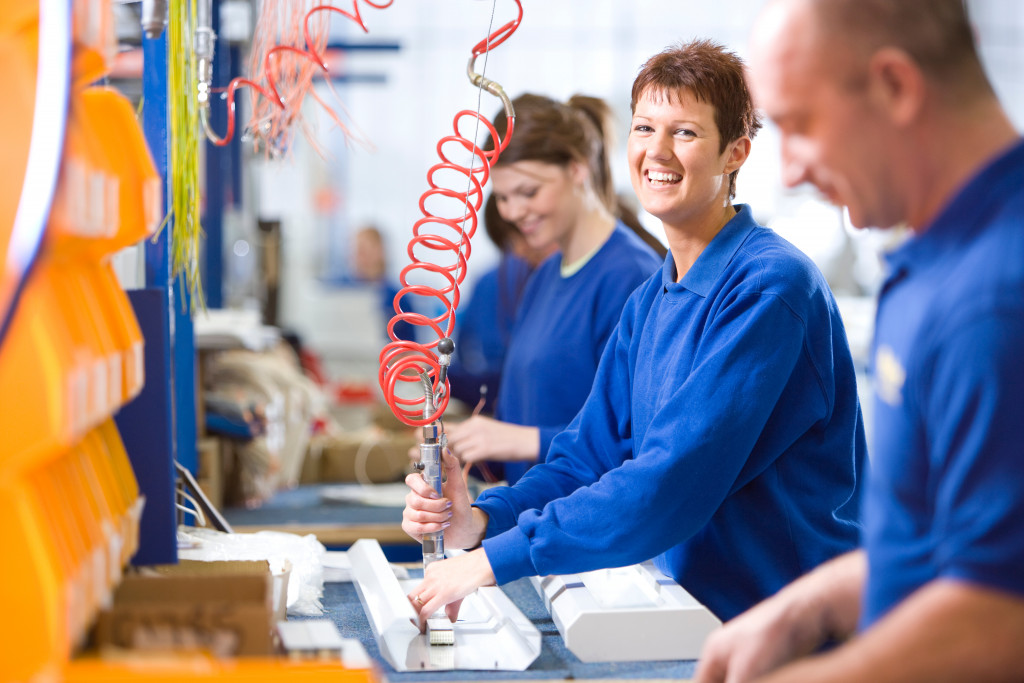• Ensure worker safety through proper safety equipment, regular safety audits, and training sessions.
• Invest in reliable equipment and regularly scheduled maintenance checks to reduce downtime due to equipment failure.
• Train workers on how to use each piece of equipment in order to reduce human errors.
• Implement a thorough quality control system for better customer satisfaction and to avoid costly recalls.
Running a successful manufacturing plant requires attention to detail and constant vigilance. While technology has made it easier than ever to track and optimize the production process, many potential pitfalls can derail the entire operation. Several areas can cause even the best-run plants to suffer from supply chain management to personnel issues.
This blog post will explore some of the most common issues when running a manufacturing plant and ways to avoid them.
1. Safety Hazards
Safety should always be the primary concern in any manufacturing plant. Ensuring that workers have access to proper safety equipment such as hard hats, protective glasses, gloves, dust masks, and steel-toe boots is essential for avoiding injuries or worse. Additionally, regular safety audits and training sessions can help workers stay aware of potential hazards in their environment and know how to respond if an incident occurs.
Here are other safety tips to keep in mind:
a. Keep the plant clean and organized at all times.
Because machinery is constantly in use, keeping the plant area free of clutter and debris is important. Take time to clean up spills and reduce the dust created in the plant.
b. Install ergonomic equipment.
To reduce the risk of injury, install equipment such as adjustable chairs and workstations that promote good posture and ergonomic design. You can also invest in ladders and handrails to safely reach high shelves and other areas.

c. Implement strict safety regulations.
All workers should understand the safety regulations and procedures in place. This includes following best practices such as wearing protective gear, avoiding contact with moving parts, staying alert to potential hazards and reporting any accidents or incidents.
d. Monitor for signs of fatigue.
Fatigue can be caused by overwork or hazardous conditions, so it is essential to monitor all workers. Ensure they have ample breaks and that the work environment is comfortable enough to reduce stress and fatigue.
2. Equipment Issues
Equipment breakdowns are one of the most common problems facing any manufacturing operation. When machines fail, production grinds to a halt until they can be repaired or replaced. To reduce downtime due to equipment failure, it’s essential to invest in reliable equipment with built-in safeguards against wear-and-tear damage. Regularly scheduled maintenance checks should also be undertaken to ensure all machines run smoothly and efficiently.
Especially when using sophisticated industrial machinery, you want to ensure all electrical and mechanical components work correctly. An excellent way to diagnose these problems is with an electrical infrared testing service, which can detect any potential issues before they cause significant damage. It uses an infrared camera to identify heat sources and inspect electrical switches, motors, power supplies, and other components.

3. Insufficient Worker Training
Workers who are not adequately trained on how machines operate can cause severe delays in production due to human error or mismanagement of resources. Investing in worker training programs tailored specifically for each piece of equipment used in your operation is vital for ensuring smooth functioning throughout the production process. Additionally, providing incentives for employees who excel at their jobs can further motivate them to work more efficiently and effectively.
You can also use technology to streamline the training process. For example, using a digital monitoring system with sensors and cameras can help detect potential problems before they occur. This way, workers can quickly identify and address issues without shutting down the entire operation.
4. Quality Control
Finally, ensuring the quality of all products produced is essential for keeping customers satisfied and avoiding costly recalls. Implementing a robust quality control system with checkpoints throughout the production process can help catch potential defects before they reach the customer.
Whether you’re inspecting raw materials, monitoring manufacturing processes, or testing products before they leave the plant, having a quality control system is key for preventing costly mistakes. Additionally, it’s essential to have a detailed record-keeping system that documents all quality checks and tests.
No matter what type of manufacturing plant you run, there will always be potential issues that could disrupt operations if not addressed quickly and correctly. By keeping safety in mind, investing in reliable equipment, providing adequate worker training, and implementing a comprehensive quality control system, you can drastically reduce the chances of any major issues occurring. With this knowledge and the right team, you can be well on your way to running a successful manufacturing plant.

